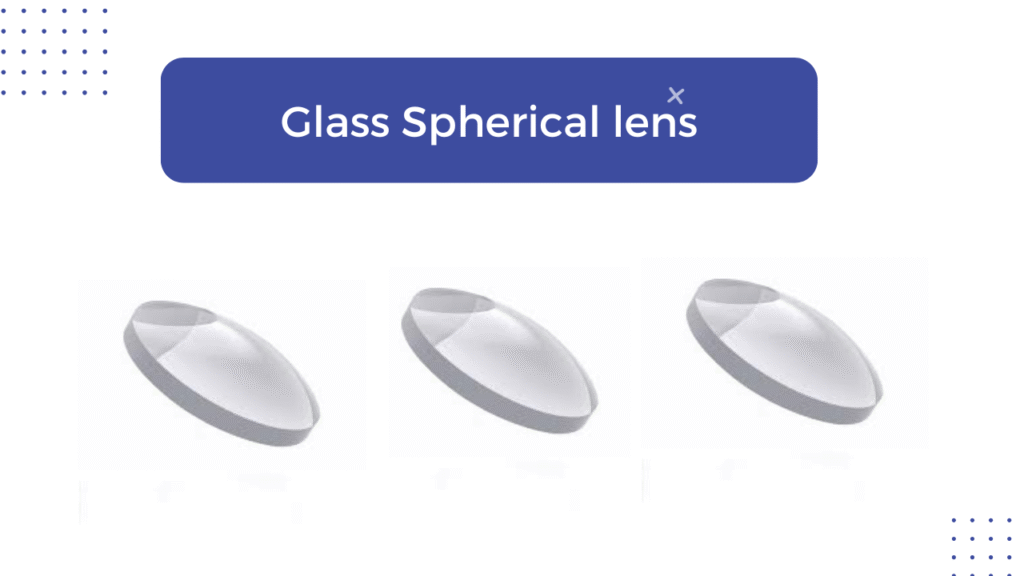When it comes to optics, one common question arises: Should you choose a glass spherical lens or a plastic lens? Both play essential roles in industries such as eyewear, cameras, AR/VR devices, and scientific instruments. However, they differ greatly in performance, durability, cost, and comfort.
In this guide, we’ll break down the key differences between glass spherical lenses and plastic lenses, covering their advantages, disadvantages, and best use cases. By the end, you’ll know which lens type fits your needs best.
What Is a Glass Spherical Lens?
A glass spherical lens is made from optical-grade glass with a curved surface that bends and focuses light precisely.
Main features:
- Superior optical clarity
- High refractive index (better light bending)
- Scratch-resistant and durable
- Common in microscopes, telescopes, cameras, and premium eyewear
Best for industries where precision and optical performance matter most.
What Is a Plastic Lens?
A plastic lens is crafted from polymers such as CR-39 or polycarbonate, designed for lightweight and safe everyday use.
Main features:
- Lightweight and impact-resistant
- Easy and affordable to manufacture
- Lower refractive index compared to glass
- Most widely used in modern eyewear
Best for everyday applications where comfort and cost efficiency matter more than ultimate clarity.
Optical Clarity: Which Lens Performs Better?
- Glass lenses: Deliver sharper images, higher light transmission, and minimal distortion. They perform well under high temperatures.
- Plastic lenses: Provide good clarity for daily use but may introduce slight distortion or lower sharpness in demanding optical systems.
Insight:
For scientific imaging or professional photography, glass lenses are superior. For everyday glasses, plastic offers “good enough” clarity at a fraction of the weight.
Weight and Comfort
- Glass spherical lenses: Heavier and less comfortable for eyewear over long hours.
- Plastic lenses: Much lighter, making them ideal for glasses, VR headsets, and wearables.
Real-world example:
Most prescription glasses today use plastic lenses because users find them far more comfortable for daily wear.
Durability and Resistance
- Glass lenses: Highly scratch-resistant but brittle; they can shatter under strong impact.
- Plastic lenses: Shatterproof and safer but prone to scratches without protective coatings.
That’s why safety goggles and sports eyewear almost always use plastic lenses.
Cost and Manufacturing Efficiency
- Glass lenses: More expensive due to premium materials and complex polishing.
- Plastic lenses: Cheaper and quicker to produce, making them the standard for mass-market eyewear.
Industry insight:
Plastic lenses dominate 90% of the eyewear market because they balance affordability with performance.
Environmental Resistance
- Glass spherical lenses: Withstand heat, chemicals, and UV light without degrading. They remain clear over decades.
- Plastic lenses: Can yellow or degrade under prolonged UV exposure unless coated with UV protection.
For industrial optics and harsh environments, glass outlasts plastic.
Applications of Glass Spherical Lenses
- Scientific tools: microscopes, telescopes
- High-end camera systems and professional photography
- AR/VR modules requiring maximum clarity
- Industrial lasers and precision optics
Applications of Plastic Lenses
- Prescription glasses and sunglasses
- Sports eyewear and protective goggles
- VR headsets and consumer electronics
- Lightweight, budget-friendly camera lenses
Glass vs Plastic Lens: Side-by-Side Comparison
| Feature | Glass Spherical Lens | Plastic Lens |
|---|---|---|
| Optical Clarity | Superior, high precision | Good, slightly lower |
| Weight | Heavy | Lightweight |
| Scratch Resistance | Excellent | Low (needs coating) |
| Impact Resistance | Low | High (shatterproof) |
| Cost | Expensive | Affordable |
| UV/Heat Resistance | Excellent | Moderate |
| Best Use | Professional/Scientific | Everyday/Consumer use |
Choosing the Right Lens: Which One Fits Your Needs?
- Choose glass if you need: maximum clarity, scratch resistance, and long-term stability in high-performance systems.
- Choose plastic if you need: lightweight, impact-resistant, and budget-friendly lenses for daily use.
Example:
A professional astronomer will prefer glass spherical lenses, while an athlete wearing safety goggles will benefit from plastic lenses.
Conclusion
Both glass spherical lenses and plastic lenses bring unique strengths to the optical world. Glass provides unmatched clarity and durability, while plastic offers lightweight comfort and safety.
Your decision should depend on application, budget, and comfort requirements. For professional or scientific optics, glass is superior. For everyday eyewear and consumer devices, plastic is the smarter choice.
Looking to explore more about optical lenses? Check our in-depth resources on spherical lenses and optical coatings to find the right solution for your project.

